Principal Investigator

Kenton J. Swartz, Ph.D.
E-mail: kenton.swartz@nih.gov
Dr. Swartz received his B.S. in Chemistry and Biology from Eastern Mennonite College in 1986. He received his Ph.D. in Neurobiology from Harvard University in 1993 where he worked with Bruce Bean studying the regulation of voltage-gated calcium channels by G-proteins and protein kinases. He did postdoctoral training with Roderick MacKinnon at Harvard Medical School, where he began isolating and studying toxins that interact with voltage-activated potassium channels.
Dr. Swartz joined NINDS as an Investigator in 1997 to establish a laboratory studying the structure and operational mechanisms of ion channel proteins. He was promoted to Senior Investigator in 2003, received the NIH Directors Award for Scientific Achievement in 2008 and the Kenneth S. Cole Award from the Biophysical Society in 2017. His laboratory is currently using biochemical, molecular biological, biophysical and structural techniques to investigate the structure and functional mechanisms of voltage-activated ion channels, TRP channels and P2X receptor channels.
Lab Members
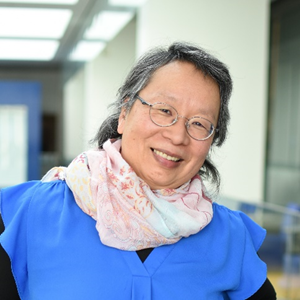

Surbhi Dhingra, Ph.D.
Postdoctoral Fellow
E-mail: surbhi.dhingra@nih.gov
Surbhi Dhingra received her MS degree in microbiology from S.P. Pune University, India in 2013. She completed her PhD in biotechnology from National Centre for Cell Science, India in 2022. For her doctorate research, she worked on understanding the functional mechanisms of the kainate receptors, a subfamily of ionotropic glutamate receptors, under the guidance of Dr. Janesh Kumar.
She has expertise in molecular biology, protein expression and purification from eukaryotic/prokaryotic systems, biochemical stabilization of proteins in solution and their biophysical characterization using various chromatography techniques, surface plasmon resonance, structural studies using cryo-electron microscopy and functional whole-cell patch-clamp recording. Her research interests are to understand the molecular basis of diverse functions carried out by ion channels in cells as well as their modulation by membrane lipids and auxiliary proteins. She has joined the Swartz laboratory as a postdoctoral fellow in 2022 to explore the functional mechanisms of P2X receptor channels, an interesting class of trimeric ion channels that are activated by extracellular ATP. In her spare time, Surbhi enjoys reading fiction, gardening, badminton and exploring new places.
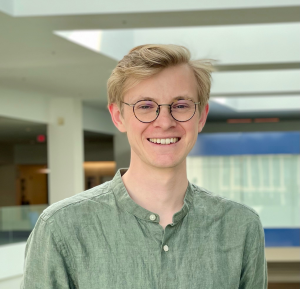
Matthew Denley, PhD
Postdoctoral Fellow
Email:
Matthew Denley graduated with a BSc (Hons) from University of Westminster in 2016, and a MSc from King’s College, London in 2017. During his doctoral studies at the University Children’s Hospital Zurich and University of Zurich, Switzerland, he focused on neurometabolic disease modelling using induced pluripotent stem cells, receiving his PhD in 2023. After experiencing electrophysiology in Zurich, Matthew moved to the Swartz laboratory to learn this exciting technique for his postdoctoral fellowship. Matthew is interested in the role of ion channels in cellular metabolism. In the long-term, Matthew wants to focus on the intersection of biological sensing of metabolite pools, energy dynamics, and ion channels. To become familiar with ion channels and electrophysiology, Matthew is working on transient receptor potential (TRP) channels and will be studying splice variants of TRPM3 to understand their role in different organs of the body.

Louis Tung Faat Lai, PhD
Postdoctoral Fellow
Email:
Louis Tung Faat Lai received his B.Sc. in Biochemistry from The Chinese University of Hong Kong in 2017 and his Ph.D. in Biochemistry from the same university in 2021. During his graduate studies, Louis gained expertise in structural biology and cryo-electron microscopy under the guidance of Dr. Wilson Chun Yu Lau and Dr. Liwen Jiang, where he solved structures of several proteins involved in autophagy. In 2022 he moved to the United States to obtain postdoctoral training with Dr. Doreen Matthies in the National Institute of Child Health and Human Development, where he studied structures and regulatory mechanisms of the mitochondrial magnesium channels. Louis successfully determined several structures of the human mitochondrial magnesium channel MRS2 and identified key residues regulating MRS2 channel opening. Louis joined the Swartz lab in 2024 and is interested in using both structural and electrophysiological approaches to explore key mechanisms of temperature-sensing and activation in the family of TRPM channels that serve as critical detectors of noxious cold or heat.

Anabel Fernandez-Mariño, Ph.D.
Research Fellow
E-mail: ana.fernandez-marino@nih.gov
Ana Fernandez-Mariño received her BS degree from the Universidade de Vigo in Spain in 2008 and her MS degree in 2009 and her PhD degree in 2013, both from the Universitat Pompeu Fabra in Barcelona. As a graduate student Ana gained expertise in using electrophysiological approaches to study calcium-activated potassium channels.
In 2014 she obtained postdoctoral training with Baron Chanda at the University of Wisconsin where she used innovative biophysical approaches to study the Shaker voltage-activated potassium (Kv) channel to understand the structural mechanism by which voltage-sensing domains couple to the pore domain to control opening of the internal gate. Ana joined the Swartz laboratory in 2017 to use both structural and functional approaches to study the mechanism of slow inactivation in the human ‘ether a-go-go’ (hERG) Kv channel, Shaker and Kv1.3 channels. From her work on inactivation in Kv1.3, she developed an interest in using nanobodies to stabilize specific conformations of Kv channels for both structural and mechanistic studies. Ana is currently focused on using our recent structure of the neuronal Kv2.1 channel along with functional approaches to investigate mechanism of inactivation and to study human mutations causing epileptic encephalopathy.
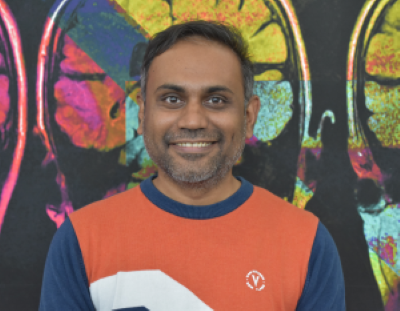
Purushotham Selvakumar, Ph.D.
Research Fellow
E-mail: purushotham.selvakumar@nih.gov
Selva received his BS in biotechnology, genetics and chemistry in 2005 from Loyola Academy, Osmania University, India. He received his MS in biotechnology in 2007 from the University of Hyderabad, India, and his PhD in structural biology from the Indian Institute of Technology, Roorkee in 2013. Selva’s doctoral research focused on investigating the structure and function of plant defense proteins using X-ray crystallography under the mentorship of Dr. Ashwani Kumar Sharma. Following his Ph.D., in 2013, Selva expanded his expertise by working with Dr. Ingrid Dreveny at the University of Nottingham, United Kingdom. During this period, he gained skills in developing soluble fusion protein tags and biophysical characterizations through fluorescence polarization, thermal shift assays, and circular dichroism.
In 2018 he joined Dr. Joel Meyerson at Weill Cornell Medical College in New York as a post-doctoral associate where he began studying the structures of mammalian ion channels using cryo-electron microscopy. He successfully determined the structures of a voltage-gated T cell potassium channel, Kv1.3, in two different inactivated conformations, and investigated their interaction with therapeutic immunoglobulin modulators. Selva joined the Swartz lab in 2023, where he is currently exploring the mechanisms of inactivation in voltage-activated ion channels, both in general and those specifically induced by various therapeutic candidates.
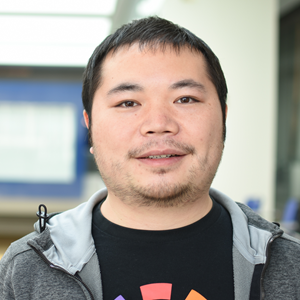
Xiaofeng Tan, Ph.D.
Research Fellow
E-mail: xiaofeng.tan@nih.gov
Xiaofeng Tan obtained his B.S. in Biotechnology from the University of Science and Technology of China in 2009 and his Ph.D. degree in Biochemistry and Molecular Biology from the same university in 2015. In 2015 Xiaofeng moved to the United States to learn X-ray crystallography at the University of California, Riverside, and cryo-electron microscopy in the laboratory of Jiansen Jiang in NHLBI.
In 2020 Xiaofeng joined the Swartz laboratory, where his main interest has been to elucidate key functional mechanisms in voltage-activated potassium (Kv) channels using single particle cryo-EM. Most recently he succeeded in elucidating the long-sought mechanism of slow C-type inactivation in the Shaker Kv channel, revealing that inactivation leads to the unanticipated dilation of the ion selectivity filter within the external pore of the channel. His big dream is to understand the mechanism of voltage sensing and how voltage-sensor activation controls opening and closing of the internal pore of Kv channels.
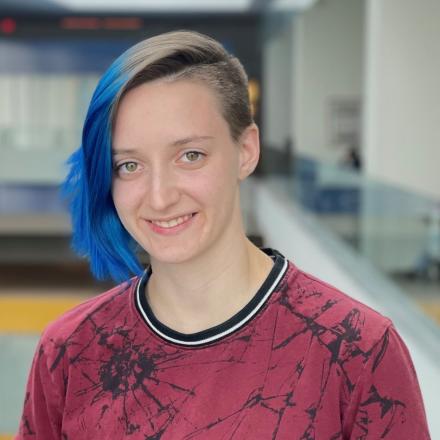
Adrian Koretsky, B.S.
Postbaccalaureate Fellow
E-mail: adrian.koretsky@nih.gov
Adrian graduated from Brandeis University in 2023, where they received a double B.S. in Physics and Neuroscience. During their time at Brandeis, Adrian participated in research with Dr. W. Benjamin Rogers, studying self-assembly of DNA structures. For their thesis project, they explored the effects of different DNA Nanostar structures on the crystallization of DNA-coated nanoparticles.
After graduating, Adrian joined the Swartz and Forrest laboratories in NINDS as a postbaccalaureate fellow. Here, they will be using computational modeling to look at different protein-protein interactions between ion channels and auxiliary partners, exploring the structure of these complexes.
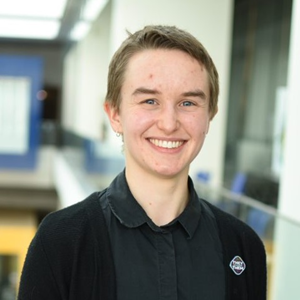

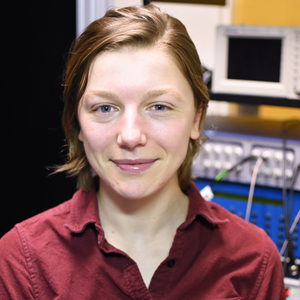
Maia Moog, B.S., M.S.
Graduate Student, NIH/Karolinska Institute Partnership
E-mail: maia.moog@nih.gov
Maia is a PhD student in the Karolinska-NIH collaborative PhD program. Her doctoral project, a collaborative effort between Dr. Kenton Swartz at the National Institutes of Health and Dr. Patrik Ernfors at the Karolinska Institute, focuses on a special type of Schwann cell at the dermal-epidermal border in the skin that plays a role in the initiation and propagation of mechanical pain.
Over the course of her studies, she will draw upon the expertise of the two laboratories to characterize the electrophysiological and molecular properties of these Schwann cells to determine which ion channels play roles in detecting and transducing painful stimuli. Before joining the Swartz Laboratory, Maia received her Master’s in Neuroscience from the University of Helsinki, where she conducted her thesis studies with the Baraban Epilepsy Research Lab at UCSF. The lab is home to dozens of zebrafish models for several forms of human genetic epilepsy. As part of her project, Maia conducted forebrain EEG field recordings in larval zebrafish to identify genes associated the catastrophic childhood epilepsy. Outside of the lab, Maia enjoys cycling. She fell in love with the sport when she cycled across America in 2014 and she hopes to one day explore another country (or continent!) by bike.
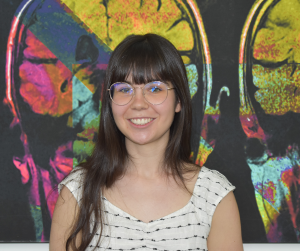
Magalí Colomer-Molera, BS, MS
Graduate Student Intern
Magalí Colomer-Molera receive her BS in biomedical sciences from the University of Barcelona in 2020 and her MS in biomedical research from the University of Pompeu Fabra in 2021. Magalí is currently a graduate student in the laboratory of Antonio Felipe at the University of Barcelona where she has been studying the role of Kv1.3 channels in the immune system and key regulatory mechanisms arising from the interaction of KCNE4 subunits with Kv1.3 channels. Magalí is working with several members of the lab to express and purify Kv channels for structure determination using cryo-EM.
